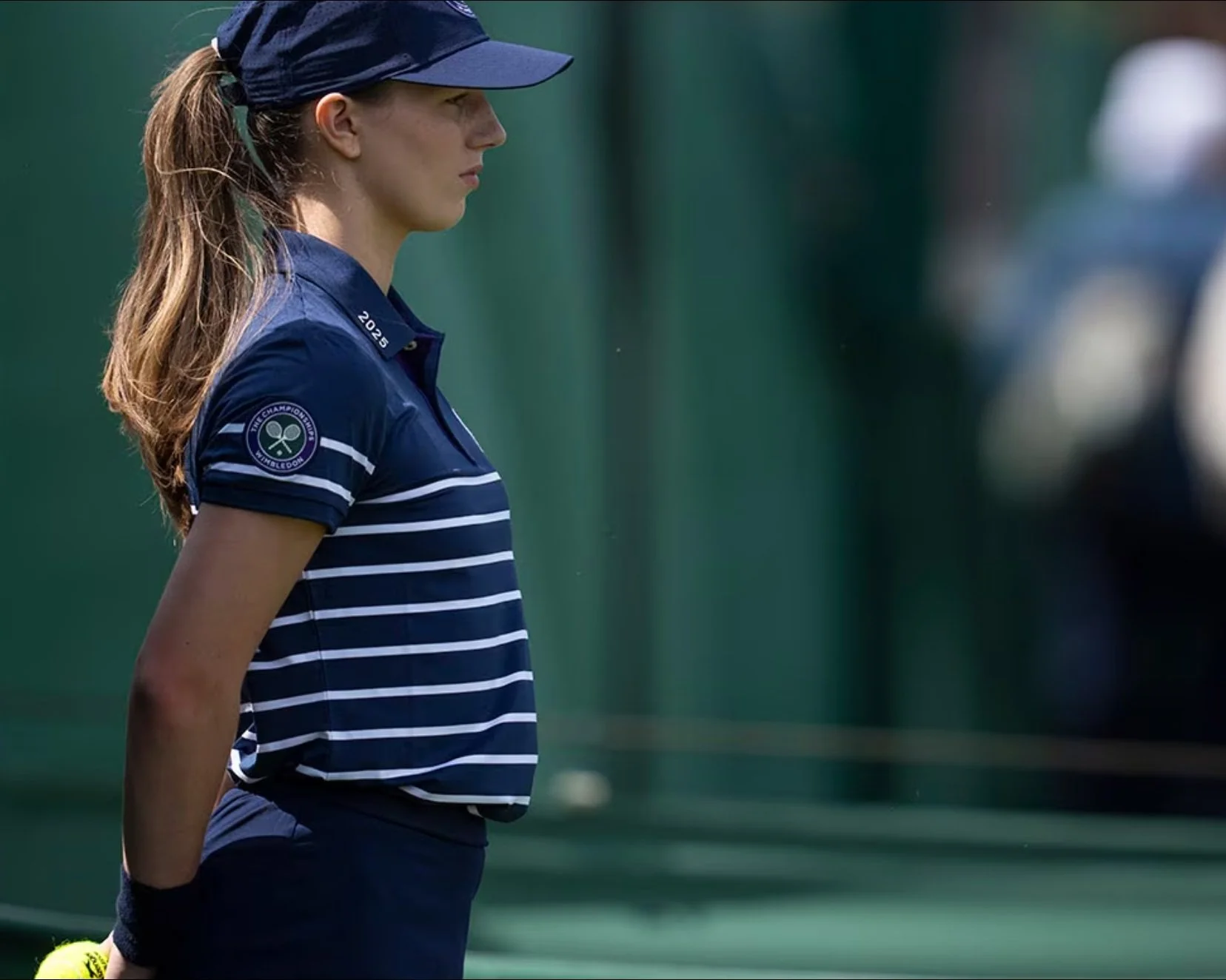Wimbledon - The polyester uniform may look smart, but is it a smart idea?
Wimbledon 2025: Hottest Start in History Challenges Players, Ball Kids, and Grounds Staff.
Wimbledon 2025 has opened under scorching skies, marking the hottest-ever start in the tournament’s long and storied history. With temperatures soaring past 35°C (95°F) on day one and forecasts predicting little relief, the All England Club is grappling with the effects of extreme heat across the grounds — not only for players but also for the often-overlooked silent heroes of the tournament: the ball kids and ground staff.
We draw attention to an often-overlooked factor intensifying the heat stress on court — the clothing. Specifically, the uniforms worn by the tournament’s ball girls and boys, which are composed of 92% polyester, are raising concerns among physiologists and performance experts.
Polyester, while a staple of modern sportswear for its durability, shape retention, and moisture-wicking capabilities, is far from ideal in extreme heat — particularly when worn by children under prolonged sun exposure.
The Heat-Trapping Nature of Polyester
Polyester is a synthetic fiber derived from petroleum. Unlike natural fabrics like cotton or linen, it doesn’t “breathe” well. That means it traps body heat and can significantly inhibit the body’s ability to cool itself, especially when combined with physical activity and direct sunlight.
In high temperatures, the body relies on sweat to cool down — through evaporation. But polyester’s tightly woven fibers trap moisture against the skin, creating a humid microclimate under the fabric that can make wearers feel hotter and less comfortable. In short, it keeps the heat in and prevents cooling out.
“In intense heat, synthetic fabrics like polyester can act more like a greenhouse than a shield,” explains Dr. Naomi Linwood, a textile and thermal comfort researcher. “They trap body heat and sweat, which can lead to faster overheating — especially in children, who are more vulnerable to heat-related stress.”
Implications for Ball Kids
The ball kids — many of whom are aged between 14 -17 — are on court for up to 45 minutes at a time, followed by short recovery breaks. Even with additional accessories like legionnaires’ hats and cooling scarves, the polyester uniforms may be exacerbating the problem rather than helping.
Signs of heat exhaustion — such as fatigue, dizziness, or nausea — become more likely under these conditions. Wimbledon organizers have increased hydration stations and shortened shifts, but the material of the uniform itself remains a major contributing factor to rising core temperatures.
Why Polyester Is Still Used — And What Needs to Change
Polyester is favored in sportswear for being:
Lightweight
Durable and stain-resistant
Stretchy and fast-drying
But many of these properties become counterproductive in intense heat. “Fast-drying” doesn’t always mean better cooling; rather, the fabric dries on the surface, but the inner heat and moisture remain trapped between the body and clothing. Additionally, polyester’s resistance to wrinkling and shape-shifting means it hugs the skin closely — limiting air circulation.
Given the reality of climate change and increasingly hot summer events, should we be rethinking the materials used in uniforms — particularly for youth and support staff. Blends with higher cotton content, use of mesh ventilation zones, and looser fits could all play a role in better temperature regulation.
Time for a Fabric Re-think at Wimbledon
Wimbledon is known for its tradition — from its dress code to its pristine lawns. But as 2025’s record-breaking heat continues to push physical limits, there may be growing pressure to evolve not just the tech on court, but the uniforms too. The reliance on polyester — while technically great for ease of movement— may no longer meet the real-world demands of increasingly hot tournaments.
We have no doubt that the fantastic teams are Wimbledon will show resilience this year and we are sure that Ralph Lauren will work with the Wimbledon team to improve the breathability of uniforms going forward. So that teams and players can perform at their best, as we move to yet hotter summers and sports tournaments in subsequent years.

